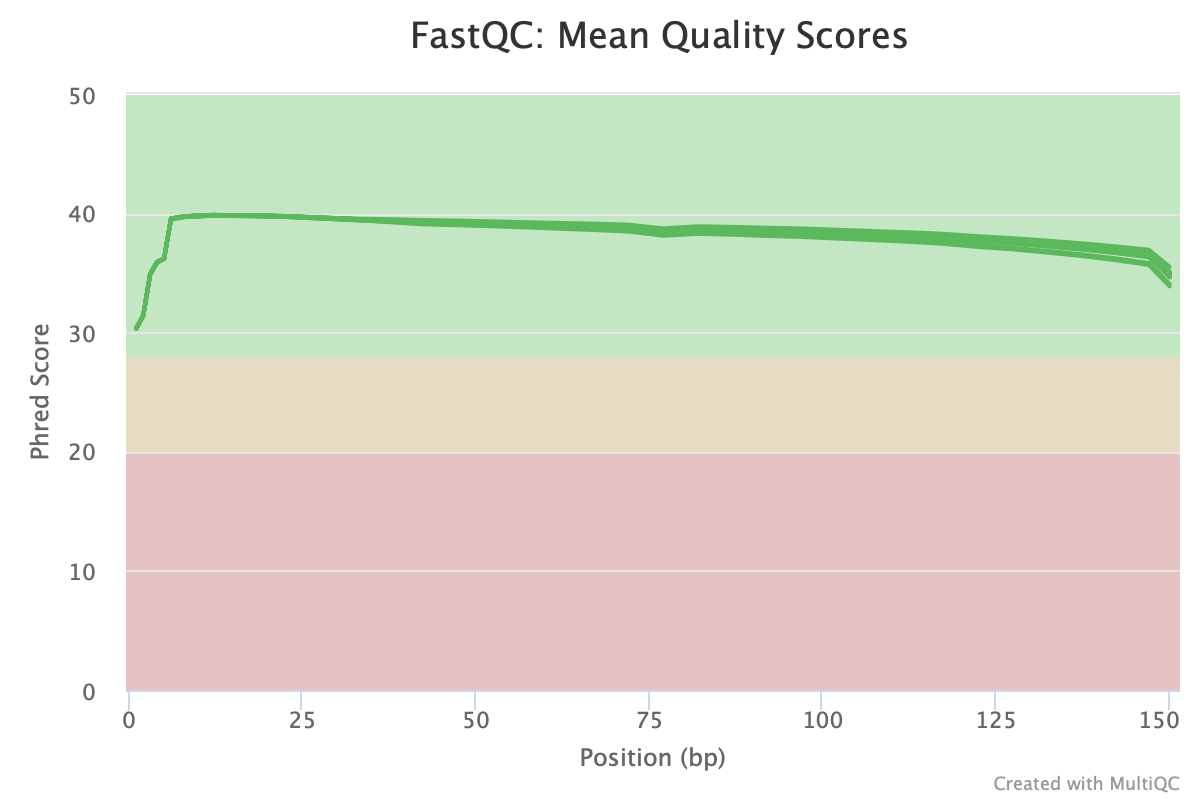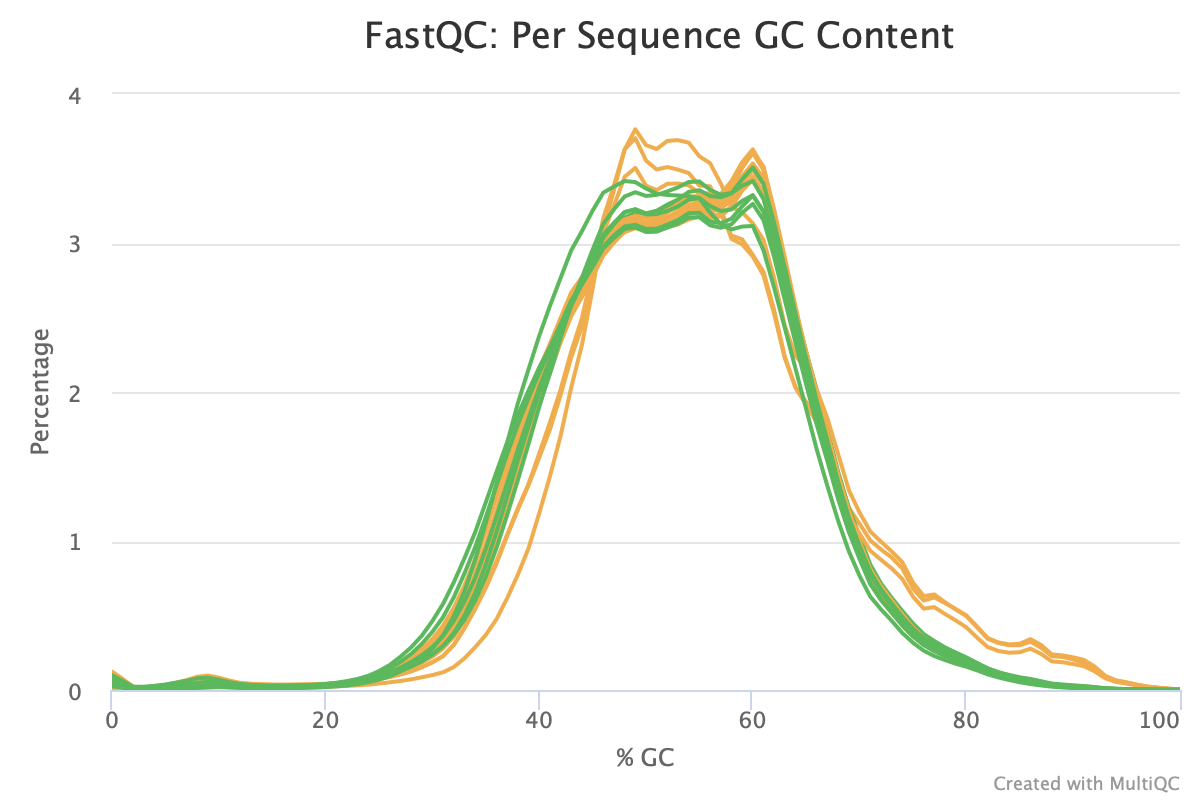
NGS quality control
Every next-generation sequencing (NGS) experiment begins with a comprehensive quality control assessment to ensure the accuracy and reliability of the downstream analysis. This essential step involves checking for duplicate reads, overrepresented sequences, GC content, and overall sequencing quality metrics such as mean base quality. Proper quality control is critical to guarantee that your sequencing data is of high enough quality for further analysis.
Following this, read mapping is performed to align the reads to the reference genome, which helps ensure that the data is adequately contextualised for subsequent steps. During this process, base calling accuracy is evaluated, as the fidelity of calling the correct nucleotide base is crucial for maintaining the integrity of the data. To further improve the quality of your results, we conduct adapter trimming and remove low-quality bases, often found at the ends of the reads. This trimming enhances read mapping efficiency and ensures that only high-quality data is utilised for downstream analysis.
Additionally, we offer the option to remove duplicate reads, depending on the experimental design and whether your library preparation includes barcodes. Reducing duplicates can be essential in achieving accurate quantification and reducing artefacts.
Another critical element of quality control involves Principal Component Analysis (PCA). After quality control and read mapping, PCA helps visualise patterns in the data, which facilitates the following:
Evaluation of expression profiles across biological replicates to assess reproducibility.
Identification of distinct sample groups, such as different tissue types or treatment conditions, based on expression differences.
Detection of outlier samples that may skew the overall analysis and reduce the reliability of the results.
To ensure that sequencing experiments are well-planned, we offer pre-experiment consultancy to discuss library preparation strategies and optimise sequencing depth to meet the needs of your study. This collaborative approach ensures that every detail of your experiment is tailored to your objectives, improving the overall effectiveness of your sequencing efforts.
We prioritise open communication throughout the process, engaging with you at each stage to discuss progress and address any concerns. Whether it's troubleshooting an issue during NGS technology workflows or providing guidance on experimental design, our team is committed to your success.

Mean quality scores

GC content for all analysed samples


